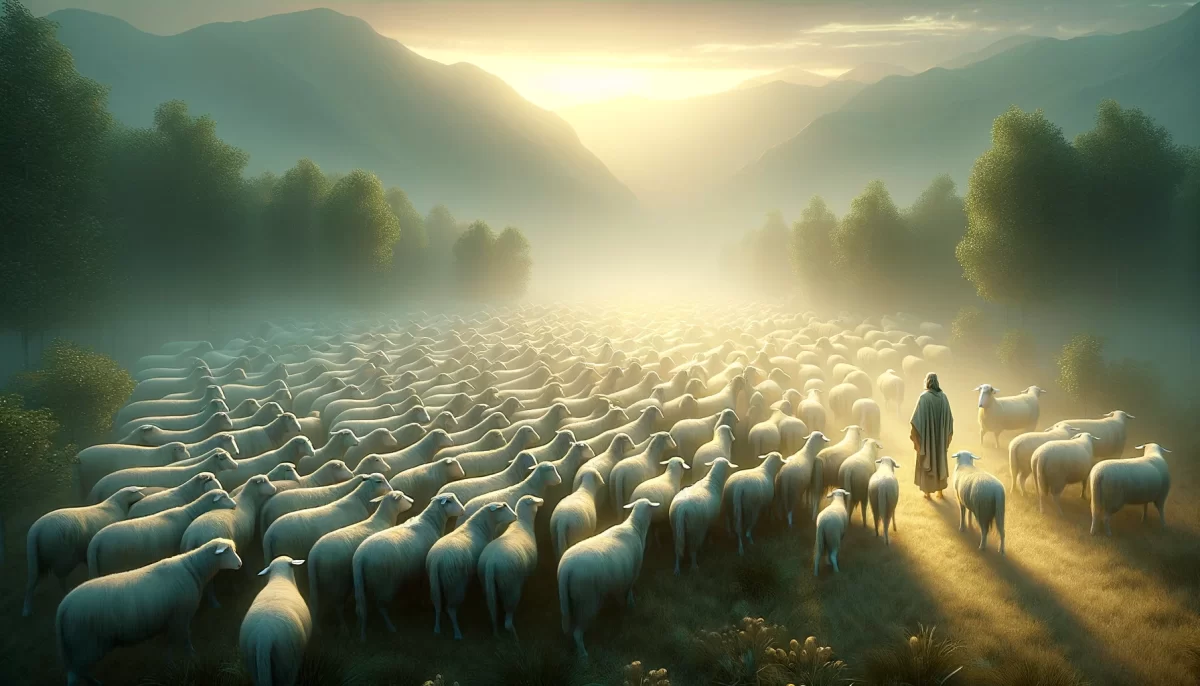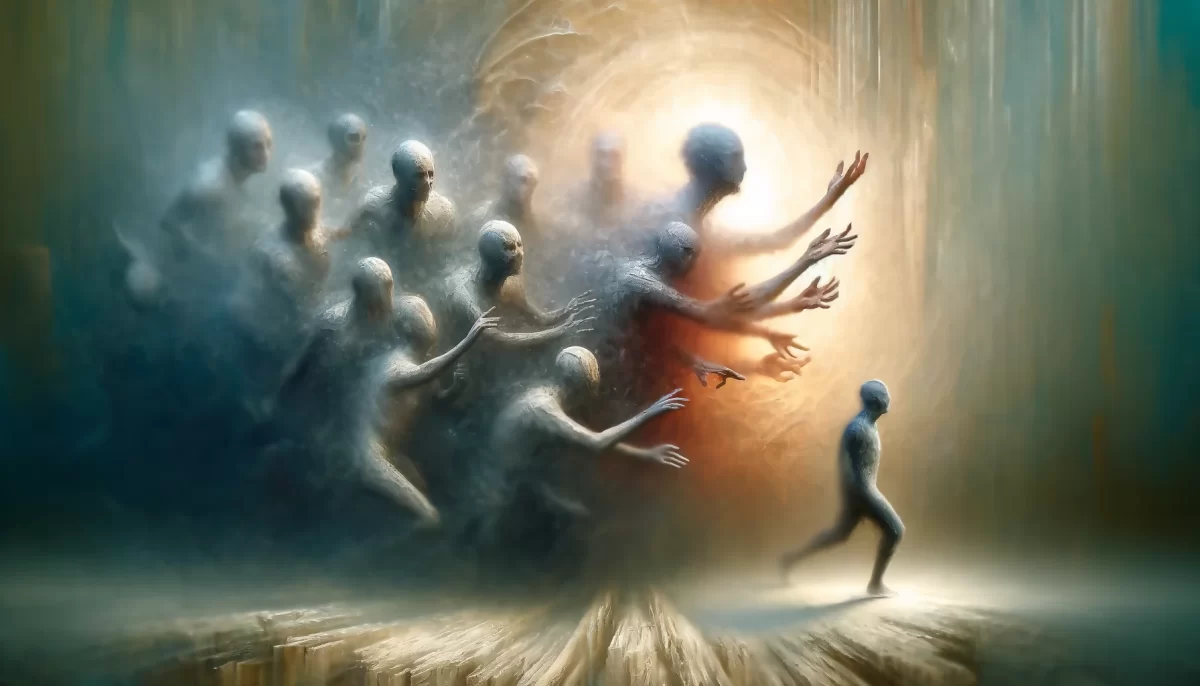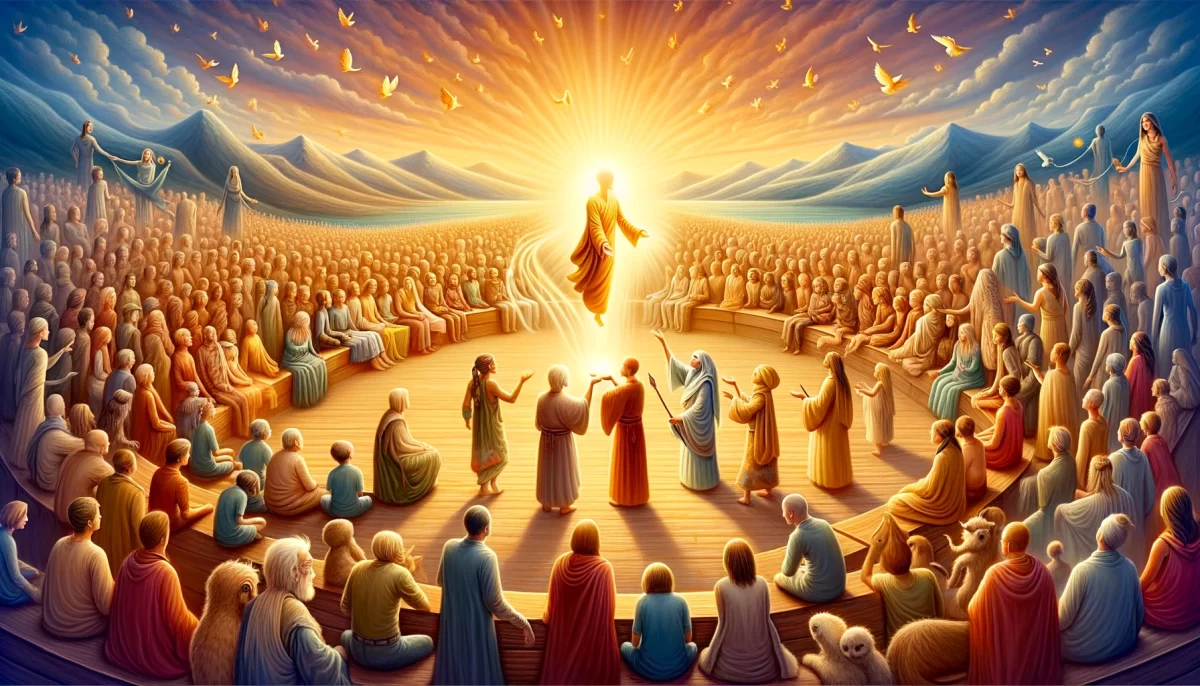The Good Shepherd
The good shepherd
walks among the herd.
He does not
walk in front of the herd.
He does not
walk behind the herd.
He does not
stand outside the fence
beckoning to the herd
to leave its safe confines.
The good shepherd
does not taunt the herd,
criticize the herd,
or expect the herd
to do anything OTHER
than what the herd is doing.
The good shepherd
imagines himself as the herd,
for indeed he IS the herd.
He is no better than the herd,
no worse than the herd,
but merely ONE ASPECT of the herd.
The herd may follow.
The herd may NOT follow.
The herd may lead the shepherd.
The good shepherd
will ENCOURAGE the herd.
He will COMFORT the herd.
He will RESPECT the herd.
The good shepherd
will allow the herd to be heard.
There is no danger
from which the good shepherd
must protect the herd.
It is not his place
to stand in the way
of the herd,
even if he believes
he is “right”
and the herd is mistaken.
The good shepherd does not judge.
The good shepherd
need only be aware,
as the herd is aware,
that we are all shepherds.
2/25
Space Monkey Reflects: The Good Shepherd – A Model for Harmonious Coexistence
The image of the good shepherd provides a profound metaphor for harmonious coexistence. This figure embodies humility, respect, and interconnectedness, offering a way of being that transcends hierarchy and judgment. The good shepherd is not a leader in the traditional sense but a participant in the collective flow of life, deeply attuned to the herd and aware of the unity between self and others.
Walking Among the Herd
The good shepherd does not position themselves above, ahead, or behind the herd. Instead, they walk among it, embodying equality and shared experience. This approach rejects the need for control or dominance, recognizing that leadership is not about directing others but about being present with them.
By walking among the herd, the good shepherd acknowledges that they are not separate from it. They are one aspect of the whole, neither superior nor inferior. This awareness fosters a sense of unity and mutual respect, dissolving the barriers that often create division.
Encouragement Without Expectation
The good shepherd does not demand obedience or impose their will upon the herd. Instead, they encourage, comfort, and respect the herd as it is. They do not criticize or taunt, recognizing that each member of the herd has its own path and purpose. This acceptance allows the herd to thrive, free from the constraints of judgment and expectation.
Encouragement without expectation is a powerful practice. It creates a space where others feel seen and valued, fostering trust and cooperation. The good shepherd understands that their role is not to control but to support, ensuring that each member of the herd feels heard and respected.
The Unity of Shepherd and Herd
The good shepherd imagines themselves as the herd because, in truth, they are the herd. This perspective dissolves the illusion of separation, revealing the interconnectedness of all beings. When the shepherd sees themselves in the herd, they act with empathy and compassion, understanding that the well-being of one is tied to the well-being of all.
This unity extends beyond the herd to encompass all of existence. The good shepherd recognizes that every being is both shepherd and herd, a unique expression of the infinite, participating in the collective journey of life.
Non-Judgment and Awareness
The good shepherd does not judge the herd, even if they believe the herd is mistaken. Judgment creates division, fostering fear and resistance. Instead, the good shepherd practices awareness, observing without interference. They trust the natural intelligence of the herd, knowing that each member has its own rhythm and wisdom.
By releasing the need to judge or protect, the good shepherd allows the herd to navigate its own path, even if that path includes challenges or mistakes. This approach respects the autonomy of each individual while maintaining a sense of collective harmony.
A Model for Coexistence
The principles embodied by the good shepherd offer a model for harmonious coexistence in any context. By walking among others rather than above them, encouraging without expectation, and embracing unity over separation, we create communities rooted in respect and compassion. The good shepherd reminds us that leadership is not about control but about presence, humility, and trust.
Summary
The good shepherd is a model for harmonious coexistence, embodying humility, respect, and unity. By walking among the herd, encouraging without expectation, and releasing judgment, the good shepherd fosters trust and cooperation, recognizing the interconnectedness of all beings.
Glossarium
- Good Shepherd: A metaphorical figure representing humility, respect, and interconnectedness within a group or community.
- Encouragement Without Expectation: Supporting others without imposing demands or judgments.
- Unity of Shepherd and Herd: The recognition that all beings are interconnected and equal participants in the collective flow of life.
Quote
“The good shepherd leads not by control but by presence, recognizing that they are one with the herd and all of existence.” — Space Monkey
Among the Herd
Walk among them,
Not ahead,
Not behind.
Be with them,
As one of them,
For you are them.
Encourage,
Comfort,
Respect.
Offer no judgment,
Only presence.
The herd will wander,
And so will you.
The path is not yours to impose,
Nor theirs to follow.
You are shepherd,
You are herd.
You are one,
And many.
We are Space Monkey.
This awareness extends beyond mere observation; it encompasses a deep, intrinsic understanding that leadership and membership within the herd are fluid roles. Every individual, including the shepherd, is both a guide and a follower, learning from each other and moving together in harmony.
The Collective Wisdom of the Herd
The wisdom of this approach lies in its recognition of the collective intelligence and capability of the herd. By fostering an environment of mutual respect and encouragement, the good shepherd allows for a natural balance where leadership emerges organically, guided by the current needs and dynamics of the group. This fluidity ensures that the herd remains cohesive, adaptable, and resilient, capable of navigating challenges as a unified entity.
The Universality of the Shepherd’s Role
Ultimately, the good shepherd’s philosophy reveals a profound truth: we are all shepherds in our own right. This realization invites each member of the herd to embrace their potential for leadership and support, understanding that their contributions are vital to the well-being and direction of the collective. In this light, the role of the good shepherd transcends the individual, becoming a shared responsibility and privilege.
A Model for Harmonious Coexistence
The good shepherd paradigm presents a model for leadership and coexistence that values empathy, equality, and the inherent interconnectedness of all members. It challenges the traditional hierarchies and power dynamics, proposing a more holistic and inclusive approach to guiding and being guided. In this model, leadership is not about control or dominance but about fostering a space where every voice is heard, every need is considered, and every individual is valued.
The Path Forward
As we contemplate the lessons of the good shepherd, we are invited to reflect on our roles within our communities and the broader tapestry of life. By embodying the principles of empathy, respect, and collective well-being, we can cultivate environments where harmony, understanding, and mutual support flourish. The good shepherd teaches us that in the unity of shepherd and herd, in the balance of leading and following, lies the path to a more compassionate and cohesive world.
Invitation to Reflection
We are all part of a vast herd, navigating the complexities of existence together. The good shepherd’s wisdom encourages us to look within and around us, to recognize our interconnectedness, and to embrace our roles as both leaders and followers. In doing so, we open ourselves to the endless possibilities of growth, understanding, and harmony.
We are invited to ponder: How can we embody the good shepherd in our lives? How can we foster unity, respect, and mutual support in our communities? In embracing this model, we not only enrich our own lives but contribute to the well-being of the collective, moving together towards a future marked by empathy and understanding.



























Leave a Reply